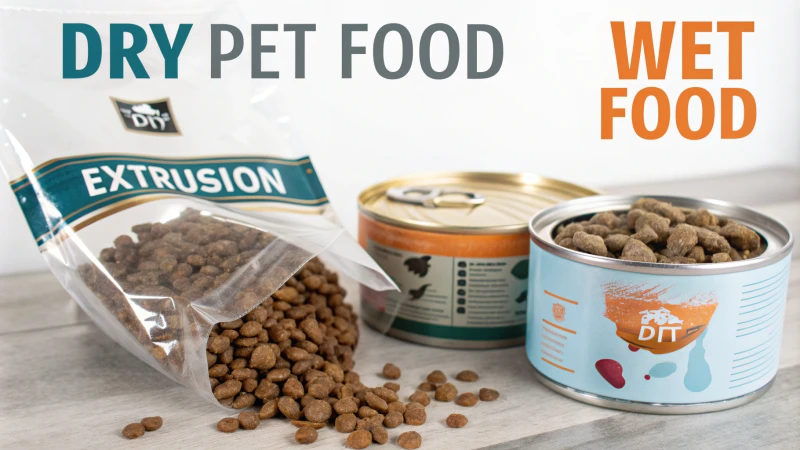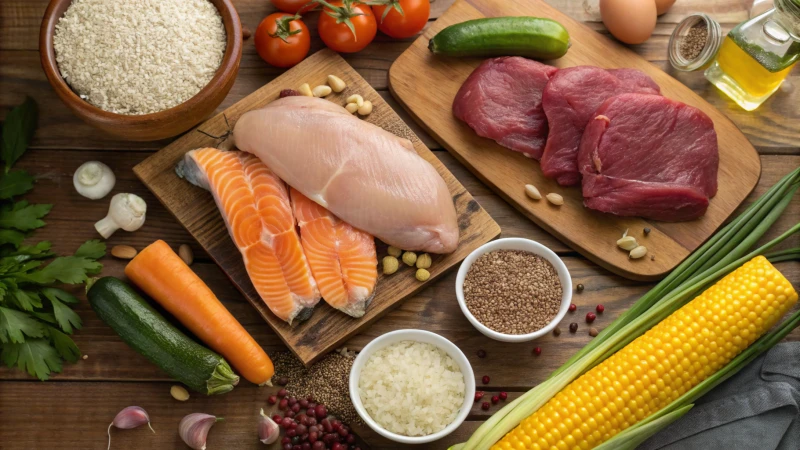
Pet food has become a vital part of ensuring the health and well-being of our pets. But have you ever wondered about the materials that make up the food your pet eats every day? With so many different options available—kibble, canned, raw, and more—understanding the ingredients used in pet food can be challenging. Not knowing what's inside could have consequences, as it might impact your pet's health, growth, and overall vitality. Are the ingredients nutritious and safe for your beloved pet? In this article, we will explore the materials used in pet food production, breaking down the various components and their roles in promoting a balanced diet. By the end, you’ll be better equipped to make an informed choice for your pet’s food.
What Materials Are Commonly Used in Pet Food?
Pet food is typically made from a mix of animal proteins, carbohydrates, fats, fiber, vitamins, and minerals. Depending on the type of food (dry kibble, canned, raw), these ingredients vary in quality and purpose. Carne such as chicken, beef, or lamb serves as the primary protein source, while granos like rice or corn provide carbohydrates. Fats and oils contribute to energy and flavor, while vitaminas y minerales are essential for ensuring a complete and balanced diet. Each ingredient plays a unique role in keeping your pet healthy.

In the pursuit of providing the best possible diet for your pets, understanding the ingredients that go into pet food can seem daunting. However, knowing the materials helps you make informed decisions about the food you give your pet, ensuring it’s both safe and nutritious. This article will take a deeper dive into the key materials, how they benefit your pet, and how the manufacturing process contributes to producing high-quality pet food.
Key Materials in Pet Food Production
Creating nutritious pet food requires a combination of essential nutrients that work together to support your pet’s overall health. Let's break down some of the most common materials used in pet food and explain why they are important:
1. Animal Proteins
Proteínas are essential for muscle development, tissue repair, and overall growth. Most high-quality pet foods contain animal-based proteins as a primary ingredient. Here are some common sources:
- Pollo: Widely used due to its high protein content and digestibility.
- Carne de vacuno: A good source of protein but can be harder to digest than chicken.
- Cordero: Ideal for pets with food sensitivities or allergies.
- Fish (salmon, tuna, etc.): Rich in omega-3 fatty acids, which promote healthy skin, coat, and cognitive function.
Animal proteins are essential in pet food because they provide the necessary amino acids.Verdadero
Animal proteins provide essential amino acids needed for growth, tissue repair, and overall health.
2. Grains and Carbohydrates
Carbohydrates play a critical role in providing energy and helping in digestion. While some pet owners opt for grain-free diets, grains like rice, corn, and barley are still commonly used in many pet foods. Here's how they contribute:
- Arroz: Highly digestible and a source of carbohydrates that provide energy.
- Maíz: A common filler ingredient; controversial for some, as it’s considered less nutritious than other grains.
- Cebada: Offers fiber, which helps with digestion and bowel health.
Grains provide carbohydrates and fiber that support digestion and energy.Verdadero
Grains offer the energy pets need while the fiber in grains supports healthy digestion.
3. Fats and Oils
Fats are a concentrated source of energy and play an essential role in maintaining healthy skin and coat. Here are some common fat sources used in pet food:
- Grasa de pollo: Rich in omega-6 fatty acids, important for skin and coat health.
- Aceite de pescado: Known for its high omega-3 content, which helps reduce inflammation and support heart health.
- Vegetable oils (e.g., sunflower oil): Added to provide essential fatty acids that promote healthy skin and coat.
Healthy fats in pet food are essential for energy and skin health.Verdadero
Fats supply concentrated energy and help maintain healthy skin, coat, and overall well-being.
4. Vegetables and Fruits
Fruits and vegetables are loaded with fiber, vitamins, and antioxidants. These ingredients help ensure that pets receive a balanced and nutrient-rich diet. Common vegetables and fruits found in pet food include:
- Zanahorias: Excellent for digestion and eye health.
- Espinacas: A great source of iron and other essential minerals.
- Boniatos: Rich in beta-carotene, fiber, and antioxidants.
- Arándanos: Packed with antioxidants that support the immune system.
Vegetables and fruits in pet food provide fiber, vitamins, and antioxidants.Verdadero
These plant-based ingredients aid digestion, boost immune function, and provide necessary nutrients.
5. Vitamins and Minerals
In order to create a well-balanced pet food, vitamins and minerals are added to ensure that pets receive a complete diet. These essential nutrients help with a wide variety of bodily functions, from bone health to immune function. Important vitamins and minerals in pet food include:
- Vitamina A: Vital for immune function and eye health.
- Vitamina D: Helps with calcium absorption and supports bone health.
- Calcium and Phosphorus: Crucial for bone and muscle health.
- Hierro: Important for oxygen transport and energy production.
Vitamins and minerals are added to ensure a balanced diet for pets.Verdadero
Vitamins and minerals are crucial for supporting immune health, bone structure, and metabolism.

The Pet Food Manufacturing Process
The materials that make up pet food are only part of the equation—how these ingredients are processed also plays a significant role in the final product's quality. Here’s an overview of the stages involved in manufacturing pet food:
1. Abastecimiento de ingredientes y control de calidad
Before any production begins, the raw ingredients are sourced from reputable suppliers who meet strict safety and quality standards. Quality control checks ensure that the ingredients meet the required nutritional standards for pets. Testing is also done to confirm that no harmful substances are present.
2. Mixing and Grinding
Once the ingredients are sourced, they are mixed and ground to ensure uniformity. This helps to achieve the desired texture and consistency. Meat, grains, vegetables, and fats are blended in precise ratios to maintain nutritional balance.
3. Cooking and Extrusion
During the cooking process, the blended ingredients are subjected to high temperatures to kill any harmful bacteria or pathogens. This is typically done using a method called extrusión, where the mixture is pushed through a machine that shapes and cooks it into kibble.
4. Drying and Coating
After extrusion, the kibble is dried to remove moisture. This is essential to prevent mold growth and spoilage. In some cases, the kibble is coated with fats, flavor enhancers, or other nutrients to improve taste and preserve the food's freshness.

Conclusion: Are Pet Food Ingredients Safe and Nutritious?
The ingredients used in making pet food are carefully selected to ensure a complete, balanced diet for pets. High-quality pet foods often contain a combination of animal proteins, vegetables, grains, and necessary vitamins and minerals. While some pet foods may contain fillers or controversial ingredients, choosing a pet food with high-quality ingredients ensures your pet gets the best possible nutrition. Understanding what goes into pet food will help you make better, more informed decisions for your pet's diet.
Contact Us for More Information
If you're looking for high-quality, nutritious pet food made with premium ingredients, contact us today! We offer a wide variety of pet foods designed to meet your pet’s specific health needs.
External Footnotes Links & Recommended Explanation Text
- Learn more about pet food protein sources
- How omega-3 fatty acids benefit your pet
- The role of fiber in pet digestion
- How to choose the right pet food for your pet's age
- Pet food ingredients and their benefits
- Grain-free pet foods: Are they necessary?
- The impact of food processing on pet food quality
- How vitamins and minerals support your pet's health
- The best fats for your pet’s diet
- Understanding pet food labels

By understanding the making materials of pet food and how they contribute to your pet's overall health, you can feel confident in the choices you make for your furry companion's diet.









